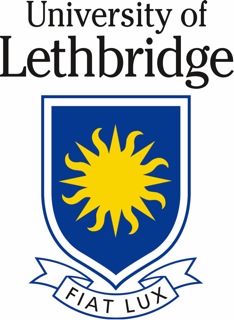|
Date |
Speaker |
Title |
|
|
Sept 9 |
everyone |
Organizational meeting and problem session |
|
at 3:15pm
in MH1090
|
(University of Lethbridge)
|
Please bring your favourite
(math) problems. Anyone with a problem to share will be given
about 5 minutes to present it. We will also choose most of the
speakers for the rest of the semester.
|
|
|
Sept 16 |
Hermie Monterde |
Discrete mathematics in continuous quantum walks |
|
at 3:15pm
in MH1090
|
(University of Manitoba)
|
Let $G$ be a graph with adjacency matrix $A$. A continuous quantum walk on $G$ is determined by the complex unitary matrix $U(t)=\exp(itA)$, where $i^2=-1$ and $t$ is a real number. Here, $G$ represents a quantum spin network, and its vertices and edges represent the particles and their interactions in the network. The propagation of quantum states in the quantum system determined by $G$ is then governed by the matrix $U(t)$. In particular, $|U(t)_{u,v}|^2$ may be interpreted as the probability that the quantum state assigned at vertex $u$ is transmitted to vertex $v$ at time $t$. Quantum walks are of great interest in quantum computing because not only do they produce algorithms that outperform classical counterparts, but they are also promising tools in the construction of operational quantum computers. In this talk, we give an overview of continuous quantum walks, and discuss old and new results in this area with emphasis on the concepts and techniques that fall under the umbrella of discrete mathematics.
|
|
|
Oct 7 |
Emily Quesada Herrera |
On the vertical distribution of the zeros of the Riemann zeta-function |
|
at 3:15pm
in MH1090
|
(University of Lethbridge)
|
In 1973, assuming the Riemann hypothesis (RH), Montgomery studied the vertical distribution of zeta zeros, and conjectured that they behave like the eigenvalues of some random matrices. We will discuss some models for zeta zeros – starting from the random matrix model but going beyond it – and related questions, conjectures and results on statistical information on the zeros. In particular, assuming RH and a conjecture of Chan for how often gaps between zeros can be close to a fixed non-zero value, we will discuss our proof of a conjecture of Berry (1988) for the number variance of zeta zeros, in a regime where random matrix models alone do not accurately predict the actual behavior (based on joint work with Meghann Moriah Lugar and Micah B. Milinovich).
|
|
|
Oct 21 |
Alice Lacaze-Masmonteil |
Recent advances on the directed Oberwolfach problem |
|
at 3:15pm
in MH1090
|
(University of Regina)
|
A directed variant of the famous Oberwolfach problem, the directed Oberwolfach problem considers the following scenario. Given $n$ people seated at $t$ round tables of size $m_1, m_2 \ldots, m_t$, respectively, such that $m_1+m_2+\cdots+m_t=n$, does there exist a set of $n-1$ seating arrangements such that each person is seated to the right of every other person precisely once? I will first demonstrate how this problem can be formulated as a type of graph-theoretic problem known as a cycle decomposition problem. Then, I will discuss a particular style of construction that was first introduced by R. Häggkvist in 1985 to solve several cases of the original Oberwolfach problem. Lastly, I will show how this approach can be adapted to the directed Oberwolfach problem, thereby allowing us to obtain solutions for previously open cases. Results discussed in this talk arose from collaborations with Andrea Burgess, Peter Danziger, and Daniel Horsley.
|
|
|
Nov 4 |
Fatma Cicek |
Moments of some Rankin-Selberg convolution $L$-functions near the central point |
|
at 3:15pm
in MH1090
|
(University of Northern British Columbia)
|
In this talk, we will study the first and second twisted moments of some Rankin-Selberg convolution $L$-functions of an automorphic form of prime power level. Our first moment result can be used to prove that automorphic forms of suitable weight and prime level are determined by the central values of their Rankin-Selberg $L$-functions for convolutions with forms of prime power level. Our second moment result provides, partially, a prime power level version of an earlier result of Kowalski, Michel and VanderKam for Rankin-Selberg convolutions of automorphic forms of prime level. This is joint work with Alia Hamieh from the UNBC.
|
|
|
Nov 25 |
Golnoush Farzanfard |
Zero Density for the Riemann zeta function |
|
at 3:15pm
in MH1090
|
(University of Lethbridge)
|
The Riemann zeta function is a fundamental function in number theory. The study of zeros of the zeta function has important applications in studying the distribution of the prime numbers. Riemann hypothesis conjectures that all non-trivial zeros lie on the critical line, while the trivial zeros occur at negative even integers. A less ambitious goal than proving there are no zeros is to determine an upper bound for the number of non-trivial zeros, denoted as $N(\sigma, T)$, within a specific rectangular region defined by $ \sigma < Rs < 1$ and $0 < Im s < T$ . Previous works by various authors like Ingham and Ramare have provided bounds for $N(\sigma, T)$. In 2018, Habiba Kadiri, Allysa Lumley, and Nathan Ng presented a result that provides a better estimate for $N(\sigma, T)$. In this talk, I will give an overview of the method they provide to deduce an upper bound for $N(\sigma, T)$. My thesis will improve their upper bound and also update the result to use better bounds on $\zeta$ on the half line among other improvements.
|
|
